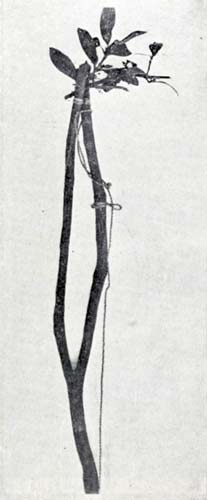
This device for snaring birds was called a tumu by the Ngāti Raukawa people. It was easier to make than the mutu or pewa, and was used in small trees or shrubs. The noose was attached to a double branch, and a cord tied to it led to the hidden fowler. Once a bird was caught, the fowler would peg the end of the cord to the ground. When all the snares were full, he would take them down and reset the snare.
Using this item
Te Ara - The Encyclopedia of New Zealand
Reference:
Elsdon Best, The Maori as he was. Wellington: Government Printer, 1974, fig. 79
This item has been provided for private study purposes (such as school projects, family and local history research) and any published reproduction (print or electronic) may infringe copyright law. It is the responsibility of the user of any material to obtain clearance from the copyright holder.







Add new comment